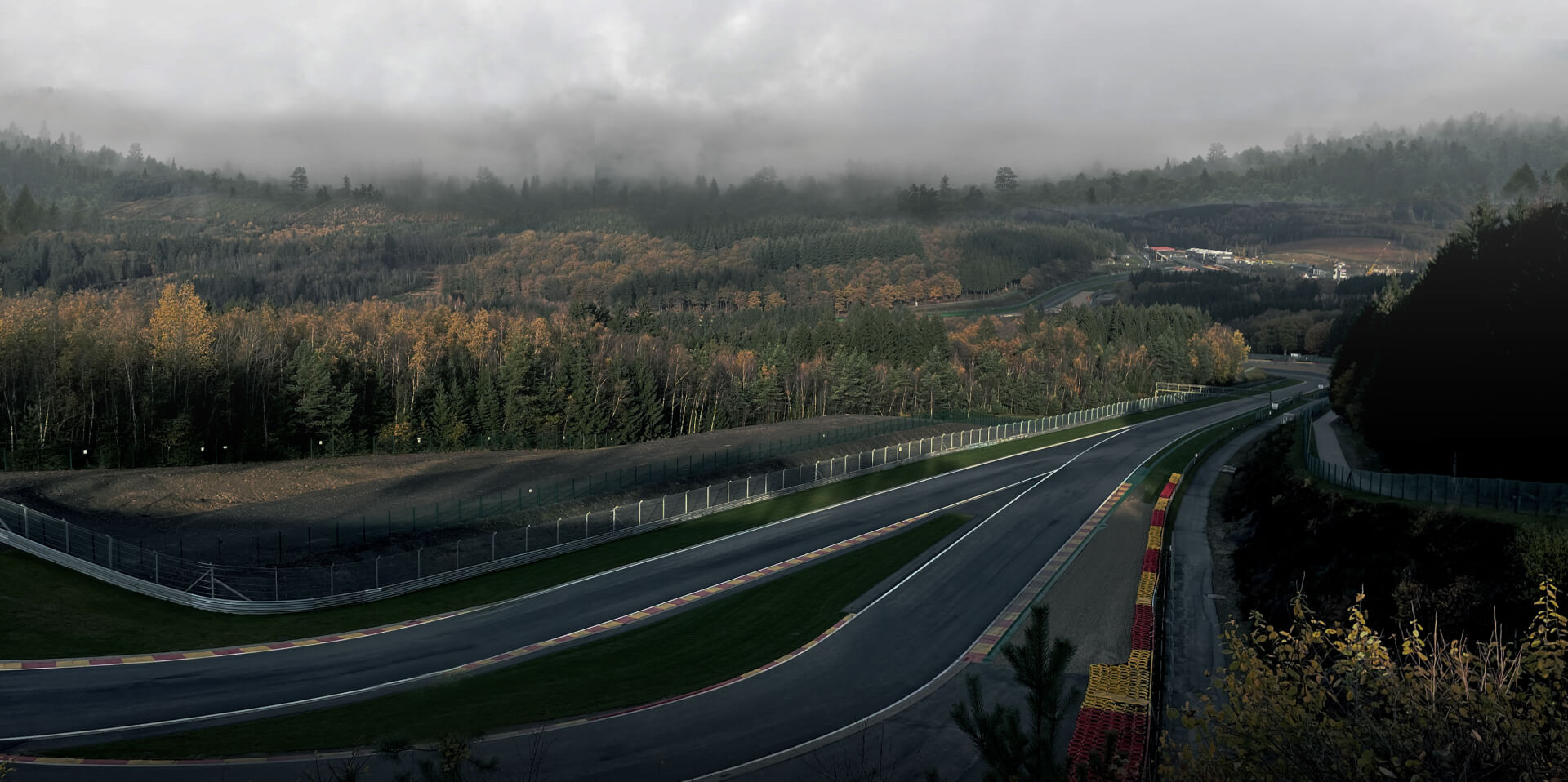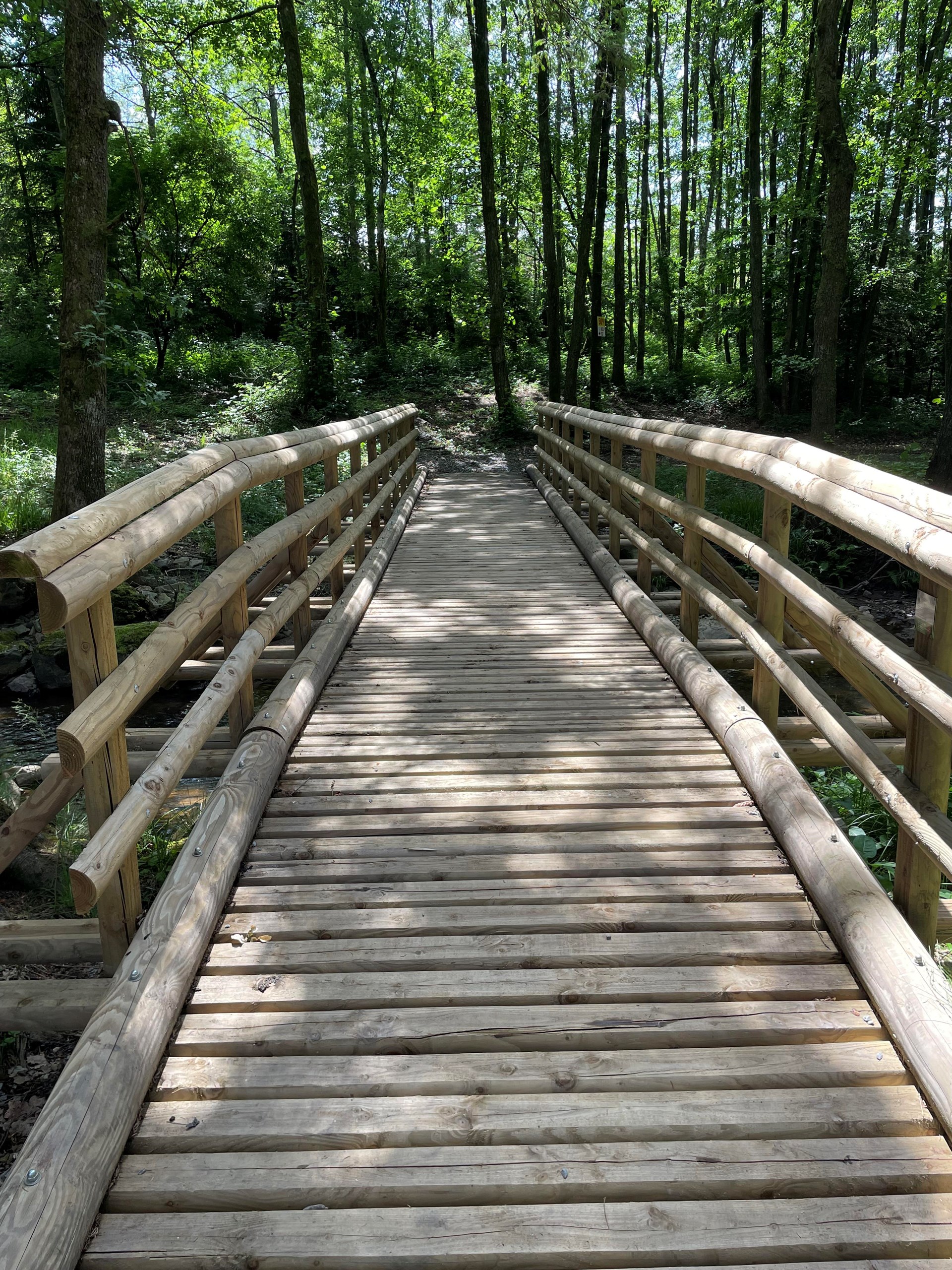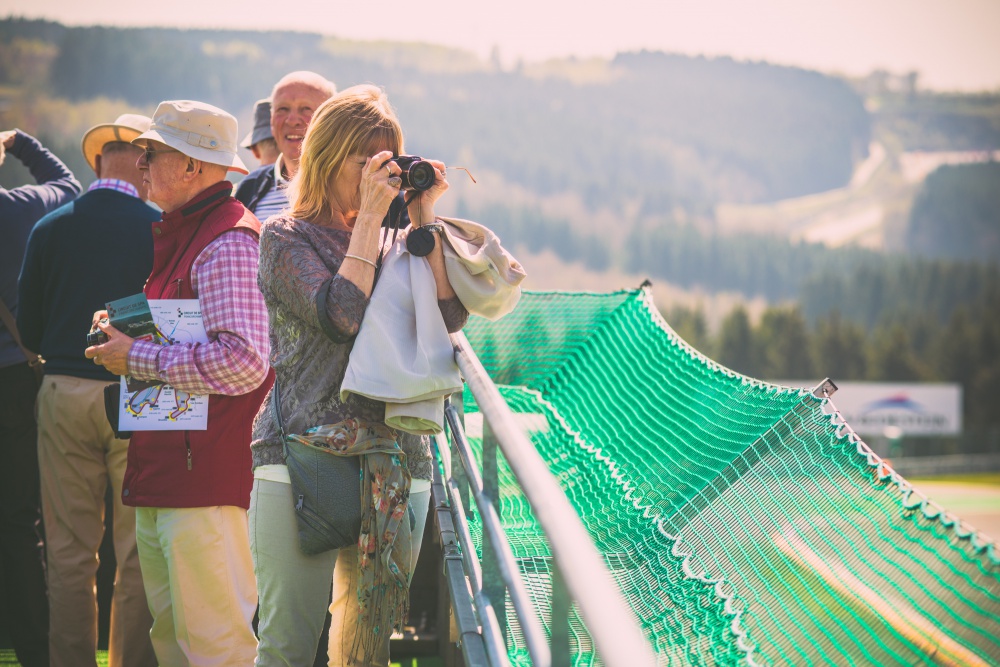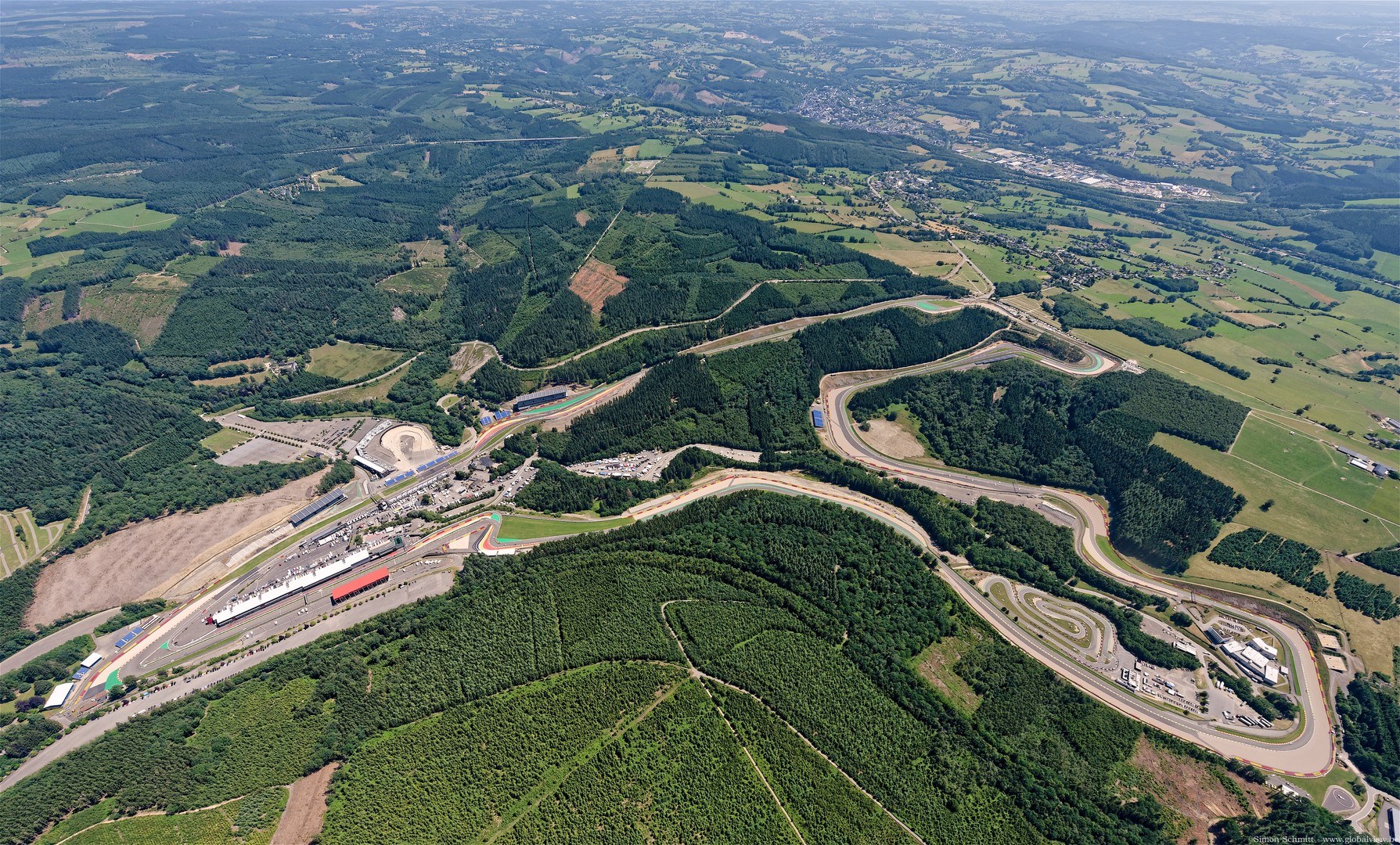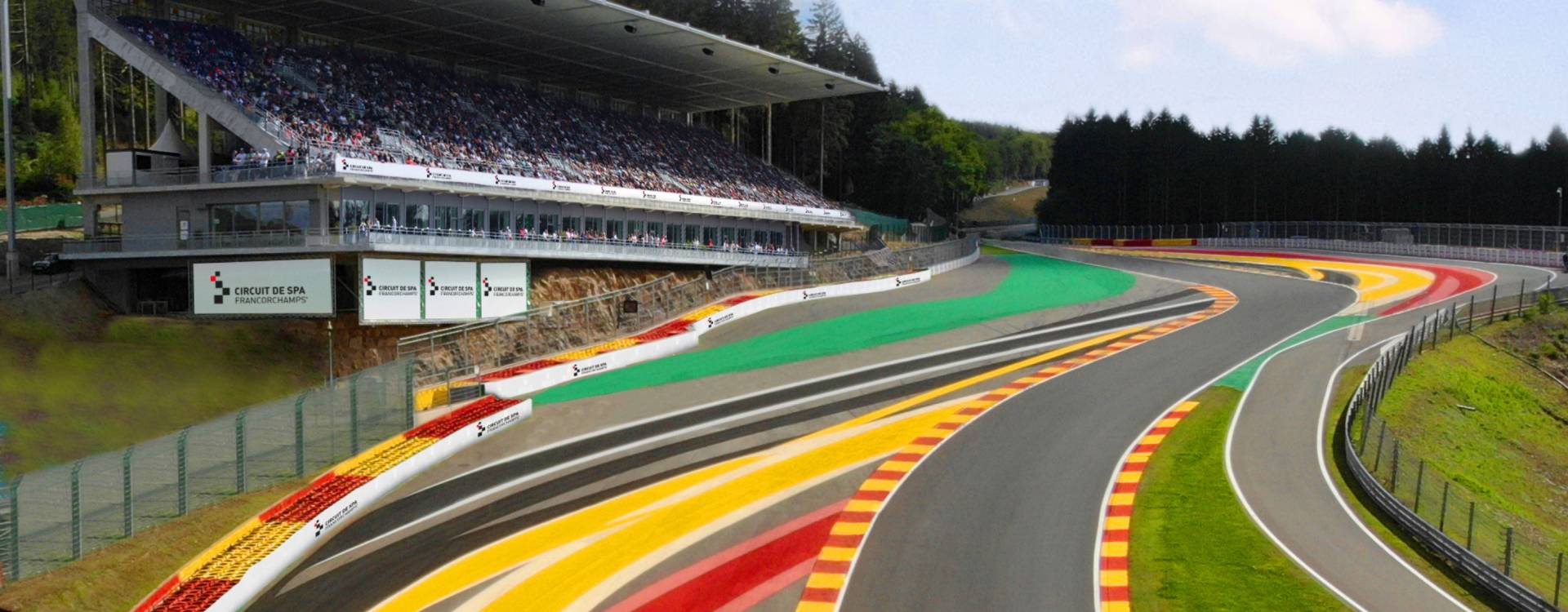
A century-old history, a shared passion
The Circuit de Spa-Francorchamps has been a privileged witness to the evolution of motor sports since 1921. It welcomes you to a history rich in success, memories and passion. Follow in the footsteps of motor racing legends and feel the passion emanating from its iconic track. In short, you'll enjoy an immersive experience at the heart of the history of motor sports, which is still being written every day.
A Circuit nestled in the heart of the Belgian Ardennes and its verdant surroundings, recognisable the world over thanks to, among other things, its legendary Raidillon (de l'Eau rouge). The biggest national and international motor sport championships are held here, and a host of sporting events round off a rich and varied calendar every year.
A track surrounded by nature
The Circuit de Spa-Francorchamps, nestled in the heart of the magnificent Ardennes region, stands out not only for its legendary mark on the world of motor sport, but also for the splendour of its natural surroundings. Immersed in breathtaking greenery. This iconic venue offers much more than thrilling motor racing.
Located close to the Fagnes mountains, famous for their unspoilt landscapes, the circuit blends harmoniously into this exceptionally beautiful natural setting. The rolling hills and dense forests add a whole new dimension to this area otherwise given over to speed and adrenalin.

Lush countryside perfect for excursions
Although often hailed as the most beautiful circuit in the world for its winding curves and electric atmosphere during races, Spa-Francorchamps is, for many, a great location for its not as well known lush natural surroundings. The flora and fauna in this forested region offer a diverse and well-preserved ecosystem, testifying to the natural wealth that coexists with the hustle and bustle of motoring events.
The circuit is an ideal place for excursions into the heart of nature. Visitors can step away from the grandstands and pits to immerse themselves in a lesser-known but equally captivating aspect of this iconic site.
The winding paths that meander through the surrounding area invite you to take peaceful strolls, offering nature lovers the chance to explore the mysteries of the site. Observing the local fauna and contemplating the botanical diversity are just some of the experiences that transform the Circuit de Spa-Francorchamps into an incredible place for walking, where the beauty of nature rivals the renown of the world of motor sports.

The Circuit also has unlikely history with red water
Eau Rouge (red water), la Source, Pouhon - there are many references to water on the track at the Circuit de Spa-Francorchamps, and not by coincidence.
L'Eau Rouge isa stream that runs under the track at the foot of the Raidillon and then meanders through the site, between the paddocks and the entrance to Blanchimont. English speakers refer to Eau Rouge with inference to the Raidillon without always saying it. This stream is a tributary of the Amblève, which served as a border between the Roman and German empires, and later between Belgium and Germany.
The river owes its name to the rusty colour of the many ferruginous carbogas seeps, or pouhons, that line its course. This river also has numerous tributaries, one of which is the Rohon. It enters the Circuit de Spa-Francorchamps site at the La Source corner, then disappears under the track to cross the paddock underground and flows into the Eau Rouge.

The Eau Rouge, a major tributary of the Amblève, is a non-navigable stream located on the right bank of the Amblève, in the municipalities of Malmedy and Stavelot. Its total length is around 15.5 kilometres. Its source is at the "Croix Delvoie" (612 metres above sea level) and meanders its way to its confluence at "Challe", 278 metres above sea level.
The Eau Rouge flows mainly over Revinian phyllites, quartzites and quartzophyllites. At the end of its course, and for a short distance, it passes over Paleozoic schistose-cemented puddingstone.
The other corner whose name will chime with motor sports fans is the Double Gauche du Pouhon. As everyone knows, this is a major hard point on the circuit. After a downhill straight, the Pouhon needs to be negotiated at breakneck speeds. And etymologically speaking, Pouhon is a naturally sparkling ferruginous mineral spring for which Spa is famous. The word means the place where water is drawn from. One of these springs can be found on the edge of the Circuit de Spa-Francorchamps site.
The Source corner,, is the first difficulty tackled after the start. Designed in a U-shape, this is the slowest corner on the circuit. The place takes its name from the various springs in the region, particularly in the Spa area.

discovering...
